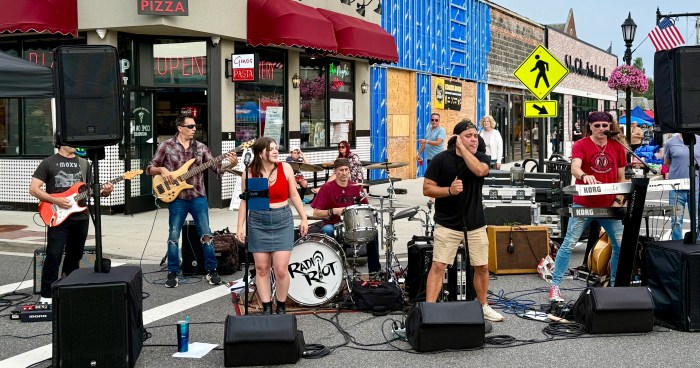When Pilgrim State Hospital opened in Brentwood during the Great Depression, it was set up to provide not just housing and treatment for the state’s surging population of schizophrenics but to distribute government-issued substitutes for family and community.
Institutions like Pilgrim, Central Islip and Kings Park were self-sufficient communities equipped with power generators, vast kitchen facilities, burial grounds and acres of farmland for patients to cultivate as therapy. Whatever patients needed was to be available inside the institutional gates, according to state policy.
Pilgrim’s population peaked at nearly 14,000 patients in 1954, the year it was declared the world’s largest hospital. In the decades that followed, several generations of improved psychiatric drugs led officials to close most of the hospitals’ units and discharge patients into the community.
Talk about irony. The self-sufficiency of Pilgrim State Hospital – later Pilgrim Psychiatric Center – predates the much-ballyhooed New Urbanism espoused by community planners and progressive developers. Soon-to-be-constructed Heartland Town Square, as you know unless you’ve been living under a rock, is the $4 billion, 452-acre live-work-play redevelopment project whose first phase Islip Town Board approved in July.
The partial approval followed more than 15 years of political lap-dancing over union hiring requirements, who pays what in infrastructure costs, how to allocate subsidies for housing and government services, and – last but not least – the best way to update zoning.
Changing zoning of course raises thorny land use questions, debates over population density, and discussions of ownership-vs-rental ratios. That’s just scratching the contentious surface. The fact is that many Long Islanders harbor the delusion that the 1950s never truly ended, steadfastly defending zoning regs, village ordinances and building requirements put in place when Ozzie and Harriet last went house hunting.
In her classic work on urbanism, The Death and Life of Great American Cities, Jane Jacobs warned of the sterile planned neighborhood “that shows a strange inability to update itself, enliven itself, repair itself, or to be sought after, out of choice, by a new generation.”
Such a community, she wrote, “is dead.”
“Actually, it’s dead from birth but nobody noticed this much until the corpse began to smell.”
Heartland Square is not just another planned community. Its proper planning, construction and leasing is essential to providing the kind of walkable, open-street, diversely-populated 21st century community that’s been shepherded into existence all across the country by savvy coalitions of business leaders, community advocates and government officials.
Everywhere except here on Long Island.
Heartland could be – and perhaps will be – the kind of walkable, bustling and diverse community Long Island desperately needs. I’m talking about a community where you can walk to work, ride your bike without fear of death, hang out in a Great Good Place until late, mingle with interesting strangers and rent without being stigmatized.
Much has been made of the exodus of young Long Islanders in recent years. The diaspora is usually attributed to inadequate job creation. That’s certainly one cause. Another’s the lack of housing options. The shortage of residential choices drives plenty of young folks to the bridges and airports. Many recent graduates – and plenty of divorcees, singles and empty nesters as well – have no use for the white picket fence fantasy. As the millennials say, that’s so last century.
It isn’t just about housing stock. It’s about community. Long Island is all about Mom, Dad and the Kids. Real estate agents greet prospects with patter about great schools, quiet night streets, and heartfelt odes to suburban insularity.
Did I leave out how near we are to the malls?
It speaks to the lunacy of Long Island’s housing and zoning policies that Gerald and David Wolkoff, the father-and-son developers who spent over 15 years preparing to transform a one-time psychiatric hospital into a vast planned community designed in the spirit of New Urbanism, only to discover that the state’s discredited legacy of mental health institutionalization policies offers the most progressive community-planning insights available.
Still, I’m banking on the Wolkoffs. I think Heartland’s going to work out fine.
Strugatch is a consultant and writer based in Stony Brook. His website is WarrenStrugatch.com.

































